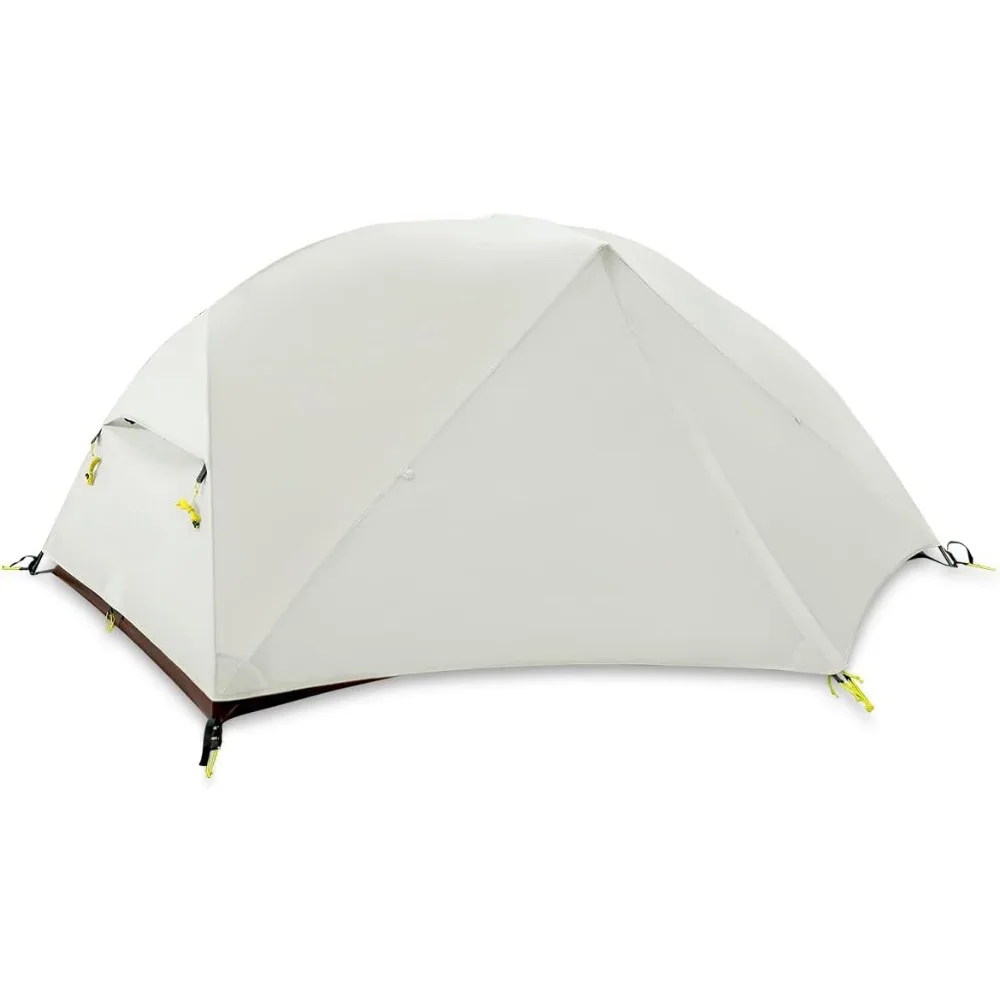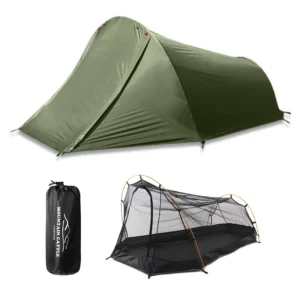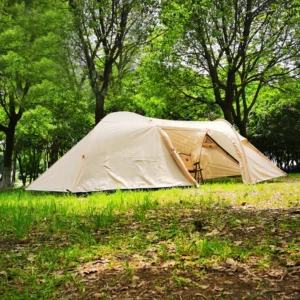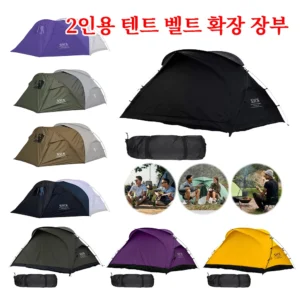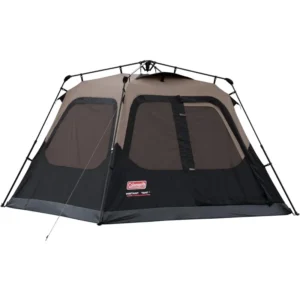1. Introduction: What Makes Fast-Pitch Tents Weather Resistant?
When heading outdoors, having shelter that sets up quickly without compromising protection is invaluable. Fast-pitch tents—featuring integrated poles, hub systems, or pop-up designs—offer exactly this convenience, typically requiring just 2-5 minutes to set up compared to 10-15+ minutes for traditional tents.
But does this quick setup come at the cost of weather protection? Many campers wonder if these convenient shelters can truly stand up to the elements. The good news is that quality fast-pitch tents can provide excellent weather resistance when designed properly.
Weather resistance in tents encompasses several key elements:
– Waterproofing to keep rain and ground moisture outside
– Wind protection to maintain structural integrity during gusts
– Condensation control to prevent internal moisture buildup
– UV protection to prevent material degradation over time
Throughout this guide, we’ll explore how fast-pitch tents address these elements and how their design features contribute to overall weather protection. You’ll discover what makes these tents capable of handling various conditions and how to maximize their protective capabilities through proper selection, setup, and maintenance.
Modern shelter options for two campers have evolved significantly, with fast-pitch models balancing convenience with protection. Understanding what a quick-pitch tent offers in terms of weather resistance will help you make informed decisions for your outdoor adventures.
2. The Science of Waterproofing in Fast-Pitch Tents
The most immediate weather concern for most campers is staying dry during rainfall. Fast-pitch tents use several technologies and design elements to achieve effective waterproofing.
Hydrostatic Head Ratings Explained
The waterproof capability of tent fabric is measured using Hydrostatic Head (HH) ratings, expressed in millimeters. This measurement indicates how much water pressure the fabric can withstand before leaking:
- 1500mm: Suitable for light rain and brief showers
- 3000mm: Adequate for moderate, sustained rainfall
- 5000mm+: Excellent protection during heavy, persistent downpours
When considering if 3000mm waterproof rating is enough for your needs, think about the typical weather conditions you’ll encounter. For most three-season camping, 3000mm provides sufficient protection.
Fabric Materials and Their Properties
| Material | Advantages | Considerations |
|---|---|---|
| Polyester | UV resistant, less stretching when wet, faster drying | Generally less breathable than nylon |
| Nylon | Lighter weight, more supple, better strength-to-weight ratio | Can sag when wet, degrades faster in sunlight |
The thickness of these materials, measured in denier (D), affects both waterproofing and durability. Entry-level fast-pitch tents often use 70D fabric, while premium models may feature 150D+ for enhanced durability and water resistance.
Critical Waterproofing Features
Even waterproof fabric won’t keep you dry without these essential elements:
- Seam construction: Quality fast-pitch tents feature taped, welded, or inverted seams that prevent water from penetrating through needle holes.
- Bathtub floors: These wrap several inches up the sides of the tent, preventing ground water from seeping in where the floor meets the walls.
- Comprehensive rainfly coverage: Full-coverage rainflies that extend nearly to the ground provide significantly better protection than partial covers.
It’s important to understand the distinction between “water-resistant” (can handle light moisture) and “waterproof” (engineered to keep water out even during sustained rainfall). Many quality waterproof camping tent options provide the latter through a combination of appropriate materials and thoughtful design.
3. Wind Resistance: Structure and Stability Features
Wind presents a particular challenge for fast-pitch tents due to their emphasis on quick setup. However, well-designed models incorporate several features that provide excellent stability even in blustery conditions.
Pole Materials and Design Impact
The poles form the skeleton of your tent and directly affect wind performance:
- Fiberglass: Common in budget models; flexible but can break under stress
- Aluminum: Lightweight with excellent strength-to-weight ratio; preferred for quality fast-pitch tents
- Steel: Extremely strong but heavy; sometimes used in hybrid designs
- Air beams: Inflatable support structures offering good flexibility in wind
Hub-connected pole systems, common in modern fast-pitch tents, create multiple anchor points that distribute wind force more effectively than simple pole sleeves.
Tent Shapes and Wind Performance
Different tent shapes handle wind in distinctive ways:
- Dome tents: Excellent wind resistance due to their aerodynamic profile and balanced structure
- Cabin tents: More interior space but typically less wind-resistant due to flat walls
- Tunnel tents: Good wind handling when properly oriented with the narrow end facing the wind
Understanding wind resistance in alpine tents provides insights applicable to all tent types. The principles of aerodynamic shapes and structural reinforcement apply universally.
Anchoring Systems
A tent’s wind resistance is only as good as its anchoring system:
- Quality dome camping tent designs typically include multiple guy line attachment points
- Look for reinforced stake loops and attachment points at stress areas
- More guy line points generally indicate better potential stability
- Proper stake angle (45° away from tent) maximizes holding power
Even the best-designed tent requires proper setup to achieve its full wind resistance potential. The stake quality, placement, and tension of guy lines significantly impact performance in windy conditions.
4. Managing Condensation: Ventilation and Breathability
One often overlooked aspect of weather resistance is managing moisture from within. Condensation occurs when warm, humid air (from breathing or body heat) contacts the cool tent walls, creating water droplets that many campers mistakenly attribute to leaking.
The Condensation Challenge
Several factors contribute to condensation:
– Temperature differential between inside and outside the tent
– Human respiration (we exhale about 1 liter of moisture overnight)
– Wet gear or clothing stored inside the tent
– Limited air circulation
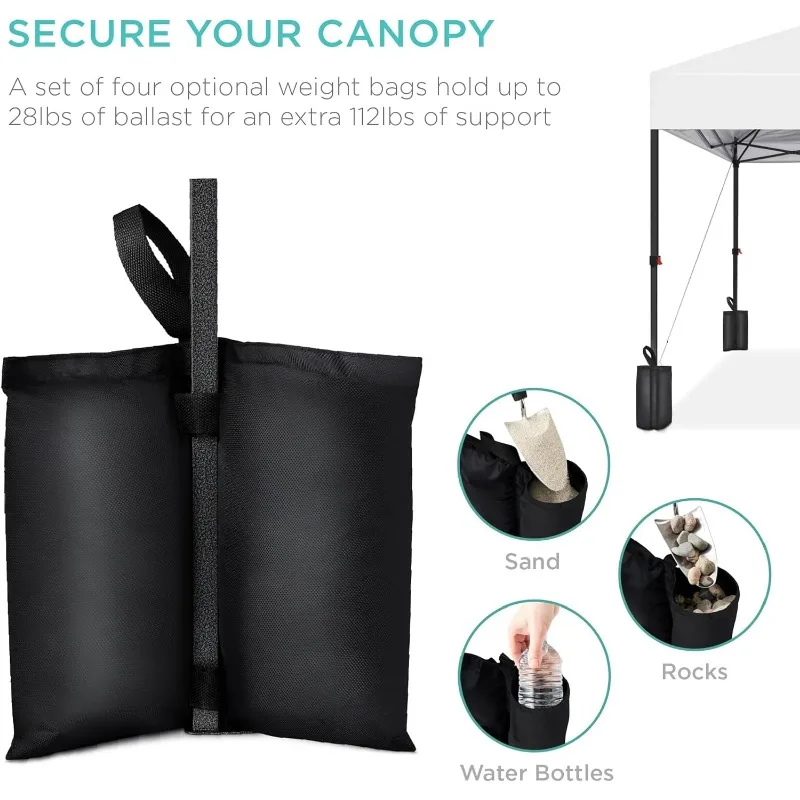
Double-Wall Construction Benefits
The most effective solution to condensation is proper tent construction. Double-wall tents feature:
– An inner tent body (often partially mesh) that allows moisture to escape
– An outer rainfly that repels external moisture
– An air gap between layers that provides insulation and prevents contact with condensation
Understanding the differences between single wall vs double wall ultralight tents helps explain why double-wall designs generally offer superior condensation management.
Ventilation Features to Look For
Quality fast-pitch tents include thoughtful ventilation features:
– Mesh panels in the tent body to release moisture
– High and low vents in the rainfly to create airflow
– Adjustable door and window openings for customized ventilation
– Roof vents to release rising warm, moist air
Practical Condensation Management
To minimize condensation issues:
– Open vents whenever weather permits
– Avoid cooking inside the tent
– Dry wet gear outside when possible
– Choose elevated, dry campsites rather than low, damp areas
– Leave some space between sleeping bags and tent walls
Effective condensation management keeps your gear dry and contributes to comfort and long-term tent durability by preventing mold and mildew development.
5. Durability and UV Protection: Long-Term Weather Resistance
Weather resistance isn’t just about immediate protection—it also involves how well your tent maintains its protective qualities over time.
Fabric Strength and Tear Resistance
Better fast-pitch tents incorporate features that enhance long-term durability:
– Ripstop patterns: Reinforcement threads woven in grid patterns that prevent tears from spreading
– Higher denier ratings: Thicker fabrics (measured in denier) resist punctures and abrasion
– Quality stitching: Reinforced, consistent stitching at stress points prevents seam failure
Reinforcement Points
Areas that experience the most stress require additional reinforcement:
– Pole insertion points with extra material and stitching
– Corner attachments with reinforced webbing
– Door zippers with storm flaps and backing
– Guy line attachment points with extra material layers
UV Degradation and Protection
Sunlight poses a significant threat to tent materials:
– UV radiation breaks down synthetic fibers, reducing strength
– Waterproof coatings degrade faster when exposed to prolonged sunlight
– Polyester typically offers better UV resistance than nylon
Higher-quality heavy duty 4 season tent options often incorporate UV-resistant treatments that significantly extend fabric life. This protection is particularly valuable for fast-pitch tents, which may see more frequent use due to their convenience.
With proper care, quality fast-pitch tents can last for many years and hundreds of nights of use. The initial investment in better materials and construction pays dividends through extended lifespan and continued weather protection.
6. Fast-Pitch vs. Traditional Tents: Weather Performance Compared
When evaluating whether a fast-pitch tent meets your weather protection needs, it’s helpful to understand how they compare to traditional designs.
Comparative Strengths and Limitations
| Feature | Fast-Pitch Tents | Traditional Tents |
|---|---|---|
| Setup time | 2-5 minutes | 10-15+ minutes |
| Wind stability | Good to excellent (hub designs) | Excellent (when properly staked) |
| Rain protection | Very good with quality models | Very good to excellent |
| Condensation management | Good (varies by ventilation design) | Excellent (typically more ventilation options) |
| Extreme weather handling | Moderate (3-season models) | Better with specialized 4-season designs |
| Durability | Good (varies by price point) | Excellent in premium models |
Seasonal Considerations
Most fast-pitch tents are designed as 3-season shelters, ideal for spring through fall camping. Their strengths include:
– Excellent for weekend trips and moderate weather conditions
– Sufficient for unexpected rain and wind during typical camping seasons
– Best suited for temperatures above freezing
For winter camping or extreme conditions, specialized 4-season tents typically offer better protection. Understanding the ultimate guide to fast-setup tents can help you determine if these designs match your typical camping scenarios.
Quality Tier Differences
Not all fast-pitch tents offer equal weather protection:
– Entry-level models ($50-100) provide basic shelter in fair weather
– Mid-range options ($100-250) offer reliable 3-season protection
– Premium designs ($250+) compete with traditional tents in weather resistance
The weather performance gap between fast-pitch and traditional tents has narrowed significantly with modern materials and design innovations.
7. Campsite Selection for Maximum Weather Protection
Even the most weather-resistant tent benefits from strategic campsite selection. Your choice of location can significantly enhance your tent’s ability to withstand weather challenges.
Terrain Considerations
- Choose elevated ground that won’t collect rainwater
- Look for natural drainage paths to avoid pooling water
- Avoid depressions that could become puddles or stream beds
- Check overhead for dead branches or other falling hazards
Wind Protection Strategies
- Use natural windbreaks like hills, rock formations, or dense vegetation
- Position your tent with the narrowest profile facing prevailing winds
- In wooded areas, stay back from the forest edge where wind is strongest
- In open terrain, seek slight depressions that reduce wind exposure
Mastering two-person lightweight tent setup includes understanding how terrain features affect your tent’s performance in various weather conditions.
Distance From Water Sources
- Camp at least 200 feet from water bodies to avoid rising water
- Consider morning condensation patterns in valleys and near water
- Be aware that waterside locations often experience stronger winds
Thoughtful campsite selection complements your tent’s built-in weather resistance and can make the difference between a comfortable night and a challenging experience during unexpected weather events.
8. Mastering the Perfect Pitch: Setup Techniques
The weather resistance of even the best fast-pitch tent depends significantly on proper setup. Following these techniques ensures you maximize your tent’s protective capabilities.
Foundation and Orientation
- Clear the ground of sharp objects that could damage the floor
- Orient the tent with the smallest profile facing the prevailing wind
- Position doors away from the wind direction when possible
- Ensure the site is level to prevent sliding during sleep and water pooling
Achieving Proper Tension
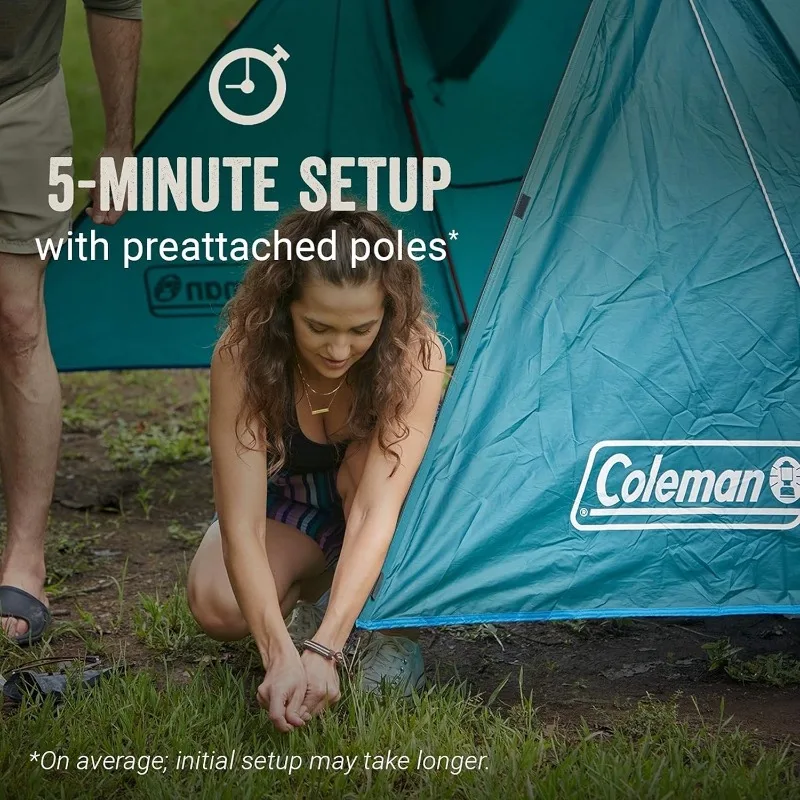
- Stake corners in an X-pattern for initial stability
- Create even tension across the tent body
- Ensure the rainfly doesn’t touch the inner tent (causes water transfer)
- Adjust guy lines for a drum-tight rainfly without distorting the tent shape
Guy Line Techniques
- Use all provided guy points in adverse weather
- Create multiple anchor points for critical guy lines in soft ground
- Adjust tension as needed when temperature and humidity change
- Use line tensioners or trucker’s hitches for quick adjustments
Many easy setup camping tent options still require proper tensioning to perform well in challenging weather. The “fast-pitch” refers primarily to the pole assembly, while proper staking and guy line setup remain essential for weather resistance.
9. Weather-Proofing Maintenance: Preserving Your Tent’s Protection
Regular maintenance preserves your tent’s weather resistance capabilities, extending its usable life and performance.
Cleaning and Drying
- Always dry completely before storage to prevent mold and mildew
- Clean with mild soap and water, never harsh detergents
- Remove dirt and debris that can damage waterproof coatings
- Avoid machine washing or dry cleaning
Reapplying Waterproofing
Signs your tent needs waterproofing renewal include:
– Water no longer beading on the surface
– Increased condensation transfer through the fabric
– Visible wearing of the original coating
Apply waterproofing treatments to:
– Rainfly (seam sealer and fabric treatment)
– Tent floor (focused on high-wear areas)
– Door and window seams
Maintaining waterproof gear care extends beyond tents to all your outdoor equipment, following similar principles of gentle cleaning and appropriate treatment.
Storage Best Practices
- Store loosely in a cool, dry place, never compressed
- Use a storage sack larger than the included stuff sack
- Keep away from heat sources and direct sunlight
- Avoid storing in garages or attics with extreme temperature fluctuations
Regular maintenance turns an initial investment in a quality tent into years of reliable weather protection for countless adventures.
10. Key Features to Look For in Weather-Resistant Fast-Pitch Tents
When shopping for a fast-pitch tent that offers superior weather protection, focus on these essential features:
Essential Weather Protection Elements
- Full-coverage rainfly extending close to the ground
- Bathtub floor with taped seams
- Quality pole materials (aluminum preferred over fiberglass)
- Multiple guy points with reinforced attachments
- Adequate ventilation options for condensation control
Design Considerations
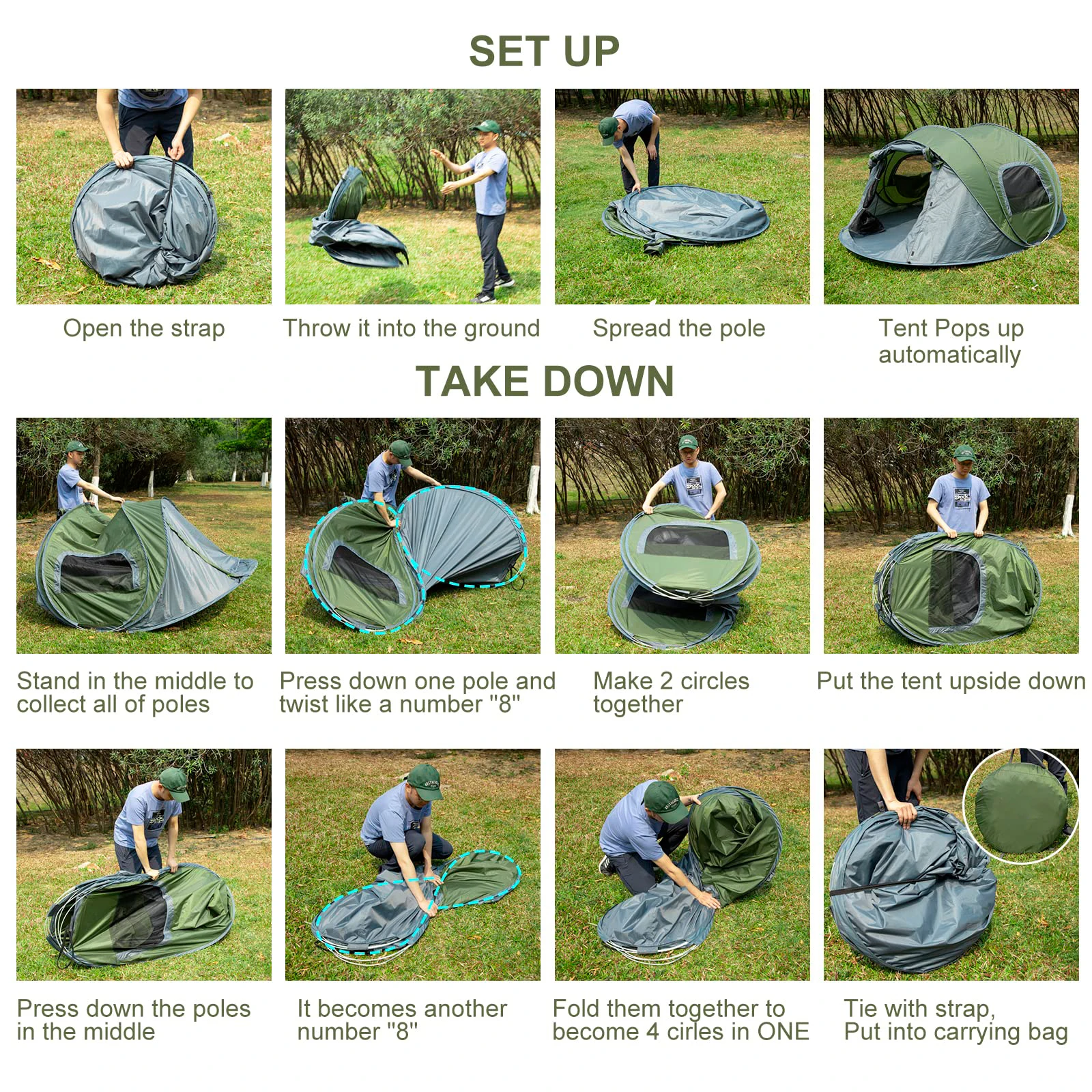
- Hub-based pole systems provide superior stability compared to simple pop-ups
- Double-wall construction with mesh inner tent body
- Vestibule space for gear storage without compromising sleeping area
- Adjustable ventilation that can be operated from inside the tent
- Weather-protected entrances with storm flaps over zippers
Understanding essential features of quick setup tents helps you identify models that balance convenience with weather protection.
Quality Indicators
- Fully taped seams (not just “critical” seams)
- Reinforced stress points at corners and pole insertions
- YKK zippers or other premium zipper brands
- Adjustable tensioners on the rainfly
- Sturdy stake and guy line materials included
Many instant camping tent options incorporate these features while maintaining their quick-setup convenience.
Heavy Duty 4 Season Tent, Mountaineering Tent, Winter Camping Tent
$870.40 Select options This product has multiple variants. The options may be chosen on the product pageCompact Backpacking Tent, Lightweight Backpacking Tent, Waterproof Camping Tent
$335.52 Select options This product has multiple variants. The options may be chosen on the product pageCamping Tent with Vestibule, Waterproof Camping Tent
Price range: $407.89 through $479.48 Select options This product has multiple variants. The options may be chosen on the product pageHeavy Duty 4 Season Tent, Ultralight Freestanding Tent, Winter Camping Tent
$3,722.66 Select options This product has multiple variants. The options may be chosen on the product pageBackpacking Tent with Vestibule, Trekking Pole Backpacking Tent, Waterproof Camping Tent
Price range: $271.99 through $519.52 Select options This product has multiple variants. The options may be chosen on the product pageEasy Setup Camping Tent, Instant Camping Tent
Instant Cabin Tent Double Layer Canvas 1-Minute Setup Spacious Family Camping Shelter with Air Vents$308.10 Select options This product has multiple variants. The options may be chosen on the product page
11. Is a Fast-Pitch Tent Right for Your Weather Conditions?
Determining whether a fast-pitch tent suits your needs requires honest assessment of your typical camping conditions and expectations.
Ideal Conditions for Fast-Pitch Tents
Fast-pitch tents excel in:
– Weekend camping trips in fair to moderate weather
– Spring through fall camping in most climates
– Situations requiring frequent setup and takedown
– Locations with occasional rain and moderate winds
– Family camping at established campgrounds
When Traditional Tents Might Be Better
Consider traditional designs for:
– Extended backcountry expeditions
– Winter camping or high-altitude environments
– Areas with sustained heavy winds
– Regions with monsoon-like rainfall
– Very hot climates requiring maximum ventilation
Key Questions to Ask Yourself
- How often do I encounter severe weather while camping?
- How important is setup speed versus absolute weather protection?
- What’s the worst weather I might reasonably encounter?
- Will I primarily car camp or backpack?
Various camping shelter options for two exist beyond traditional and fast-pitch tents, each with specific weather performance characteristics. Understanding these options helps match your shelter to your environmental needs.
12. How Can Fast-Pitch Tents Handle Extreme Weather?
While fast-pitch tents are primarily designed for convenience in moderate conditions, quality models can handle unexpected weather challenges with proper preparation.
Extending Weather Capabilities
To enhance your tent’s weather performance:
– Use all available guy lines and stake points
– Add additional guy lines at critical stress points
– Position natural windbreaks to shield your tent
– Create windbreaks with tarps if needed
– Consider adding a footprint for additional floor protection
Recognizing the Limits
Signs your tent might be approaching its limits include:
– Excessive pole flexing during gusts
– Water pooling on the rainfly
– Rising water around the perimeter
– Ice forming on guy lines in freezing conditions
Many waterproof pop-up tent options balance quick setup with reasonable weather protection, but understanding their limitations is crucial for safety.
Emergency Weather Management
If caught in unexpectedly severe weather:
– Add reinforcement to guy lines and stakes
– Clear drainage channels around your tent
– Check and adjust tension regularly as conditions change
– Position gear inside to support tent walls if needed
– Know when to prioritize safety and seek more substantial shelter
With proper selection, setup, and realistic expectations, today’s quality fast-pitch tents provide impressive weather protection while delivering the convenience that makes spontaneous outdoor adventures possible.

